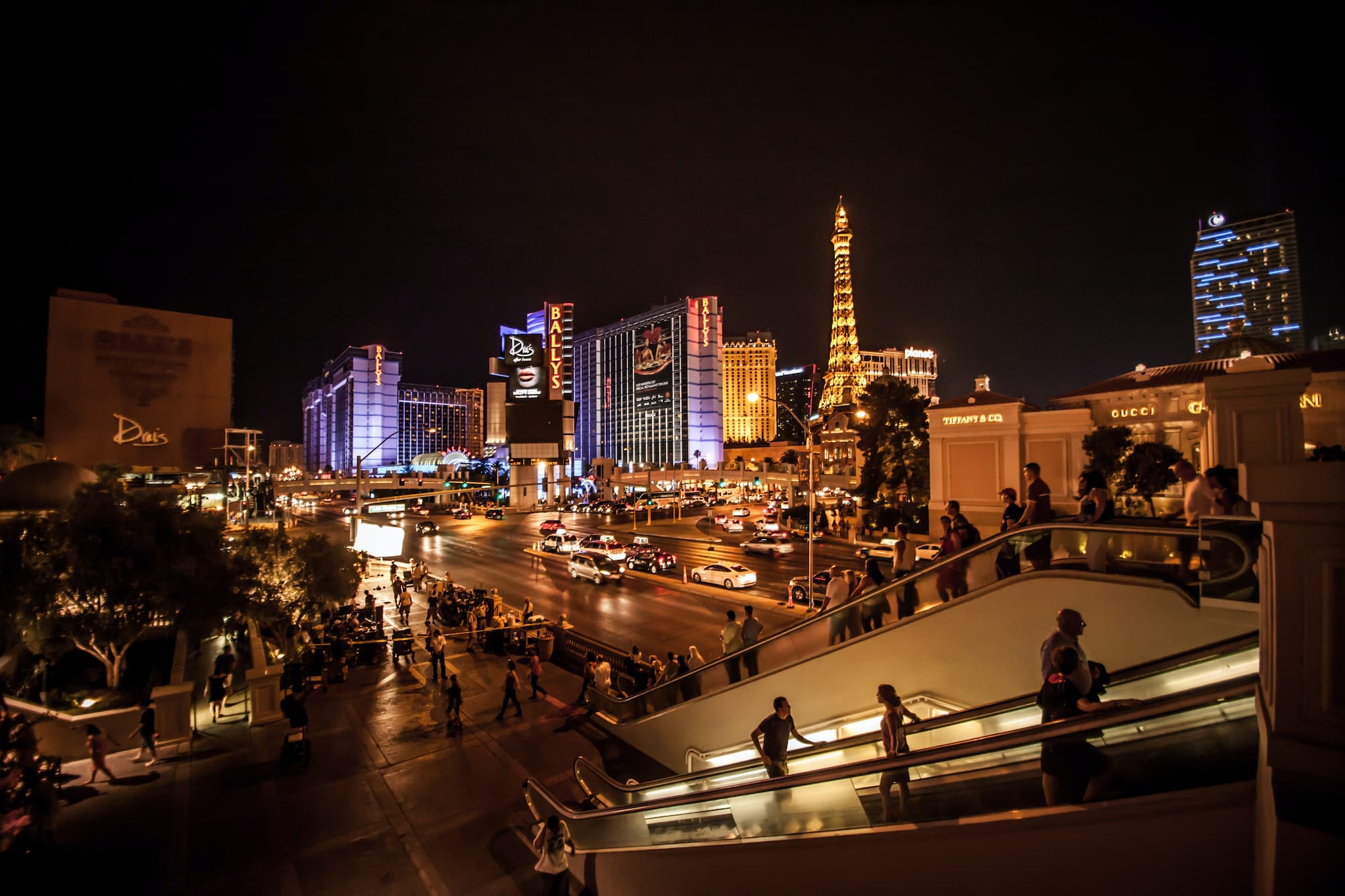Forget leisurely strolls and impromptu photo ops – the Las Vegas Strip just stepped up its pace. The Las Vegas Review-Journal reported that Clark County commissioners, in a show of synchronized agreement, approved a new law banning stopping, standing, or anything akin to a leisurely pose on the pedestrian bridges.
So, keep those selfie sticks ready and your legs limber because prolonged stopping on a bridge during your next Las Vegas trip could land you in hot water.
Pedestrian Flow Zone Ordinance
The “Pedestrian Flow Zone Ordinance,” as it’s officially called, bans stopping, standing, or anything that impedes the smooth flow of pedestrians on the Strip’s bridges and surrounding areas.
Stopping within pedestrian flow zones, encompassing the bridges and a 20-foot extension around adjoining stairs and escalators is now a misdemeanor offense under the new ordinance.
However, recognizing the need for some stationary moments, the ordinance was amended to allow waiting for elevators, stairs, or escalators within pedestrian flow zones.
From Russell Road to Sahara Avenue, every bridge crossing the Las Vegas Strip falls under the new law. To avoid potential fines, be on the lookout for the designated flow zones marked on the bridges.
What the people are saying
Proponents of the law argue it’s a safety measure designed to prevent congestion, crime, and potential accidents on busy bridges. They point to events like the recent Formula 1 race, where crowds stopping to watch on bridges could have created bottlenecks.
Critics, however, led by the American Civil Liberties Union of Nevada (ACLU-NV), denounce the law as an overreach, infringing on basic freedoms and unfairly targeting ordinary citizens. The organization has raised concerns about potential selective enforcement and violations of First Amendment rights, questioning the logic of criminalizing brief pauses on taxpayer-funded public spaces.
The law’s impact remains to be seen. Some argue it’s a necessary step to maintain order on the Strip, while others fear it could dampen the city’s vibrant, anything-goes atmosphere.

Key points to consider
- The ordinance applies to specific areas, including bridges and surrounding stairwells and escalators.
- Violating the new ordinance can result in a misdemeanor conviction, punishable by up to six months in jail, a fine of up to $1,000, or both.
- You’ll likely still be able to briefly stop for essential activities.
- It’s unclear how strictly the law will be enforced.
Whether you’re a seasoned Vegas visitor or a first-time gambler, be aware of the new law when navigating the Strip’s pedestrian bridges. A quick photo op is probably fine, but extended breaks might be best enjoyed elsewhere.
Ultimately, the goal of the Pedestrian Flow Zone Ordinance is to keep the Las Vegas Strip moving. Whether it achieves this goal without sacrificing the city’s unique spirit remains to be seen.




